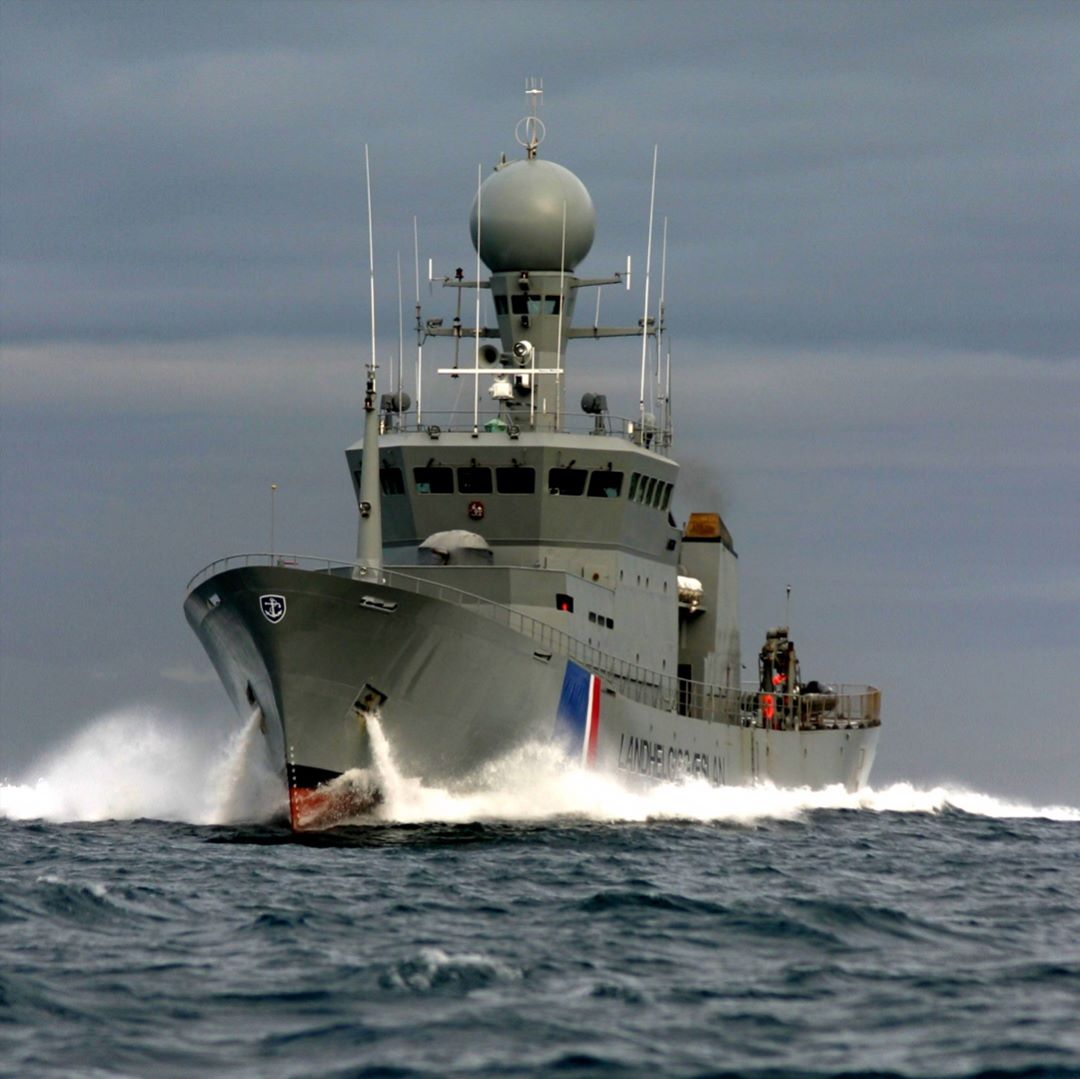So long, Tyr, King of the Cod Wars

The mighty Landhelgisgæslan (Icelandic Coast Guard) cutter Tyr, with a bone in her teeth. She was the bane of many British Tars in the frigate force in the 1970s.
Named for the Norse god “concerned with the formalities of war—especially treaties—and also, appropriately, of justice,” the modified Icelandic Coast Guard Ægir-class offshore patrol vessel Tyr was built at Aarhus Flydedok A/S in Denmark in 1974-75, at a time when the smallest (by population) member of NATO was fighting some of the strongest members of the Alliance, over fish.
The two-vessel Ægir-class were humble little gunboats, some 233-feet overall on a reinforced ice-strengthened steel hull. Weighing in at a slight 1,500-tons (at their largest), their West German-made diesel suite sipped gas and gave them an impressive 9,000nm range at 17 knots, enabling their 22-man crew to stay at sea virtually as long as the groceries held out.
Their sensors were commercial. Their original armament was an old 57mm low-angle Hotchkiss-style gun built under license at the Royal Danish Arsenal in Kopenhagen in the 1890s. The shells for the guns were pre-WWII dated. They had helicopter decks that could accommodate the country’s three small helicopters, a commercial Sikorsky S-62A variant (TF-GNA) and two U.S. surplus Bell 47Gs (TF-HUG and TF-MUN, named after Odin’s two ravens)

Tyr was more robust than her half-sister Ægir, and was the largest vessel in the ICG until 2011, carrying the fleet’s flagship position for most of her career.
The reason Iceland, which had no official military, needed such vessels was to chase off interloping European trawlers inside the country’s 50-mile limit, reaping the bounty of Icelands cod fisheries. The ICG, in turn, fought off the West Germans (1972-75) and, much more spectacularly, the British in what was termed the First (1958-59) Second (1972-1973) and Third (1975-76) “Cod Wars.”
The Icelanders got aggressive with the British anglers, cutting their nets with specially-made devices.
This brought in the support of the RN, and the ICG and a host of British frigates spent most of the early 70s trying to ram and avoid ramming each other.

The UK frigate HMS Mermaid collides with the Icelandic Coast Guard Vessel Thor in March 1976, in one of the incidents in the Cod Wars between the two countries.
Ægir specifically cracked hulls with HMS Scylla (7 June 1973) and HMS Lincoln (22 September 1973) while the late-arriving Tyr counted coup on HMS Salisbury and HMS Tartar (1 April 1976) as well as HMS Falmouth (6 May 1976).

HMS Falmouth rams Icelandic Coast Guard Tyr May 6, 1976, almost rolling the smaller gunboat, taken from the Tribal Class Frigate HMS Tartar (F133)
In time, Iceland and the UK patched things up and most of the ICG’s older vessels were retired but Tyr and her sister Ægir continued in service for another 40 years, participating in NATO maritime operations, being very active in EOD removal along Iceland’s coastline, and helping old “mother” Denmark police and secure the sovereignty of the Faeroes and Greenland.
She also had run-ins with the whale hippies over Iceland’s traditional harvest.
They were given extensive modernizations in 1997 and 2005 that upgraded the ships, replaced the old 57mm hood ornament with a more modern 1960s 40mm Bofors, and other improvements.
Once the Cold War thawed, there were other missions, and the class was sent to the Med to help in the EU’s counter-migrant operations there, with Tyr saving over 400 souls in one 2015 incident alone off the South East Coast of Italy.
Class leader Ægir was retired in 2012, after a new construction OPV, Thor, was commissioned.
Now, with the South Korean-built Freyja joining the Icelandic fleet late last year, Tyr has recently hung it up as well.
Perhaps she will be saved as a museum. One could only hope.







Pingback: So long, Tyr, King of the Cod Wars — laststandonzombieisland | The zombie apocalypse survival homestead
Pingback: So long, frigate busters | laststandonzombieisland